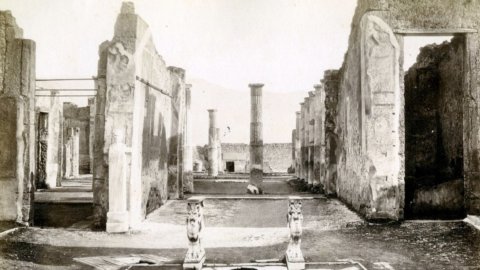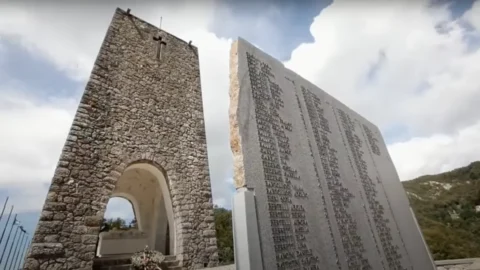The exhibition documents how the discovery of two of the most important archaeological sites in the world was communicated through letters, watercolor notebooks, engravings, drawings, photographs, postcards, between the eighteenth and early twentieth centuries.
The exhibition, which presents a series of original finds, bears witness to how authors such as Karl Jakob Weber and William Gell, Giovanni Battista and Francesco Piranesi, François Mazois and Philipp Hackert, as well as draftsmen, engravers and antique enthusiasts up to the Alinari brothers, contributed to the historical and critical success of the two excavated cities.
The exhibition traces the history of two of the most important archaeological finds in the world and how these discoveries were communicated, between the end of the eighteenth century and the early years of the twentieth century, through letters, watercolor notebooks, engravings, drawings, gouaches, photographs, archaeological and much more.
The exhibition bears witness to how authors such as Karl Jacob Weber and William Gell, Giovanni Battista and Francesco Piranesi, François Mazois and Philipp Hackert, as well as draftsmen, engravers and antique lovers up to the Alinari brothers, contributed to the historical and critical fortune of the two unearthed cities .
Herculaneum and Pompeii: visions of a discovery, promoted and created by the max museum of Chiasso in collaboration with the MANN-National Archaeological Museum of Naples - which will welcome the Italian stage, scheduled for next summer -, with the patronage of the Consulate General of Italy in Lugano, is curated by Pietro Giovanni Guzzo, former Superintendent of the archaeological heritage of Naples and Pompeii, Maria Rosaria Esposito, head of the Library of the National Archaeological Museum of Naples, and Nicoletta Ossanna Cavadini, director of the max museum of Chiasso.
The exhibition itinerary begins in the mid-eighteenth century, when scholars and enthusiasts of antiquity begin to describe the finds, initially sporadic and casual, through letters.
This is the case of JJ Winckelmann, to which are added in 1762 the comments on the conduct of the excavations, as in the letters of the Count of Caylus, collector and archaeologist, by Goethe or later, at the beginning of the nineteenth century, the punctual observations by Stendhal.
The journey of the Grand Tour at the end of the eighteenth century now includes Naples, Pompeii and Herculaneum as obligatory stops. Many artists, architects and art lovers from all over Europe – intrigued by the news circulating and by the disclosure of the first engravings promoted by the enlightened sovereign Charles III of Bourbon with the subject “The Herculaneum Antiquities Exhibited” – begin to draw live, noting on the own travel notebook sketches, watercolor drawings and written notes.
Special permits are required and the precious information about Herculaneum and Pompeii travels around the world, as in the case of the nobleman William Gell, who leaves an unpublished notebook full of annotations – exhibited in the exhibition – which will flow into various publications, including the famous “ Pompeian". The colony of the English is, in fact, very active in drawing and portraying the excavations, with the aim of publishing texts accompanied by engravings to make the ancient known.
In relation to this phenomenon, the production of the splendid etchings by Giovanni Battista and Francesco Piranesi is inserted, which portray both Herculaneum and Pompeii in a suggestive way.
With the beginning of the nineteenth century the drawing becomes precise and perspective, and the new photographic technique peeps out. In the first decades of the twentieth century, postcards in lithography or chromolithography became a usual means of communication to convey images of the places visited, thus including the unearthed cities of Herculaneum and Pompeii in their repertoire, which constitute obligatory stages of the nascent phenomenon of tourism.
To contextualize the story, about twenty original archaeological finds will be exhibited, such as jewels, including Carlo's ring or the bracelet from the House of the Faun, small bronze heads, fragments of frescoes. Among the pictorial works on display the portrait of Latapie and the reconstruction of a Pompeian house by Luigi Bazzani from New York from the Dahesh Museum.
Image: Anonymous Pompeii-House of Cornelius Rufus photograph 19,7 cm x 24,9 cm - National Archaeological Museum, Naples





